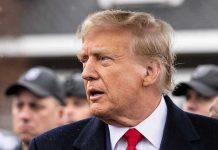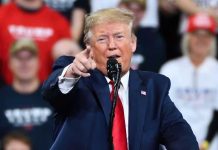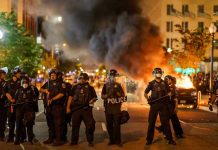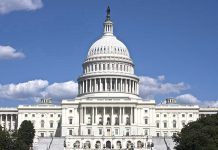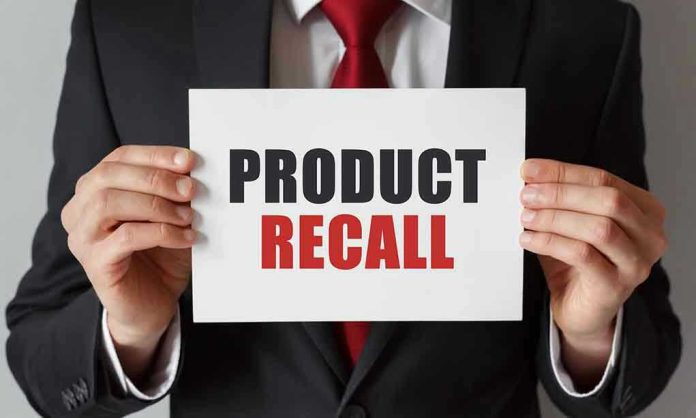
Destroying your own baby’s play yard, on government orders, no less, sounds like a dystopian headline, but it’s now a reality for dozens of American parents after a stunning recall of an Amazon-sold product that regulators say could turn a peaceful nursery into a scene of tragedy.
Story Highlights
- Federal regulators ordered the destruction, not return, of Anna Queen baby play yards sold on Amazon due to severe suffocation and entrapment risks.
- Owners must provide proof of destruction to receive a refund, a rare step that underlines the product’s dangers.
- No injuries have been reported, yet the recall’s urgency and scope signal a new era of scrutiny for online imports.
- This event may redefine how parents, regulators, and e-commerce giants approach children’s safety standards for imported goods.
Destruction on Demand: How a Recall Became a Mandate
The Anna Queen baby play yard, introduced to U.S. shoppers through Amazon in March 2025, was supposed to be a convenience for parents, lightweight, portable, and affordable. Less than nine months later, it has become a cautionary tale in consumer safety. On November 24, 2025, the U.S. Consumer Product Safety Commission (CPSC) issued a recall so urgent that simply returning the product wasn’t enough; parents were told to destroy it immediately.
The reason: these play yards violate multiple mandatory federal safety standards, exposing infants to life-threatening risks of suffocation and entrapment. The CPSC’s recall is not just a bureaucratic box-checking exercise; it’s a direct response to hazards that have proven deadly in similar products. The message is clear: if you own this product, eliminate it from your home without delay.
Most recalls end with a trip to the post office or the recycling bin. This one ends with scissors, hammers, or saws—whatever it takes for parents to render the play yard unusable. Owners must then provide photographic proof of destruction to claim a refund. This drastic protocol signals that the CPSC does not want any chance of these play yards creeping back into circulation through thrift stores, garage sales, or online marketplaces. This is not theater; it’s risk mitigation at its most uncompromising.
The Anatomy of a Recall: What Went Wrong?
Guangzhou Tinger Trading Co. Ltd., the Chinese parent company behind Anna Queen, brought these play yards to Amazon’s digital shelves in spring 2025. By November, federal regulators had flagged the product for multiple safety violations.
According to CPSC, the play yards failed to meet stability and side height requirements, which are intended to prevent the exact kind of suffocation and entrapment risks that have led to tragedies in the past. Notably, this recall was issued before any injuries occurred, a preemptive strike that underscores just how seriously the CPSC treats infant safety. About 70 units made it into American homes, and now every single one is being hunted down. The message to parents: don’t wait for a tragedy—act now.
Amazon, caught in the crosshairs, has responded by notifying affected buyers and facilitating the refund process. But the ripple effects extend far beyond just one product listing. This recall is part of a wider regulatory push to police the flood of imported children’s products entering American homes through online marketplaces. The days of assuming “Amazon approved” means “government approved” are over.
Unpacking the Fallout: What This Means for Parents and the Marketplace
For the families who purchased an Anna Queen play yard, the recall is an abrupt and unsettling intrusion into their homes. Safety experts and consumer advocates agree the destruction requirement is rare, but justified by the product’s violation of standards that exist to prevent the worst-case scenario: a child’s death. While no injuries have been reported, the CPSC’s aggressive approach reflects a zero-tolerance policy toward risks that, by their very nature, allow no margin for error. The psychological toll is not limited to inconvenience; it plants a seed of doubt about the safety of imported goods and the reliability of online platforms as gatekeepers.
Urgent Amazon recall as owners of baby item are told to destroy it immediately https://t.co/EGZg1vf6yO pic.twitter.com/SGfJ5n4J7x
— bulletinindy (@bulletinindy) November 25, 2025
For Amazon and other e-commerce powerhouses, this recall may be a turning point. Industry observers predict heightened scrutiny of children’s products, especially imports from lesser-known brands. Regulators are likely to demand more rigorous vetting, and marketplace operators may impose steeper compliance costs on sellers. The message is unmistakable: in the world of baby gear, shortcuts and missed inspections will be met with public recalls, financial penalties, and reputational harm.
What’s Next: The New Reality of Product Safety
The Anna Queen recall is already setting a precedent. By insisting on destruction before refund, the CPSC is raising the bar for how dangerous products are purged from the marketplace. Experts argue this is only the beginning. Enhanced pre-market testing for imports, stricter enforcement for online retailers, and greater transparency for consumers are all on the table. For now, parents are left to grapple with the unsettling knowledge that even well-reviewed Amazon purchases can slip through regulatory cracks.
As the industry recalibrates, the central lesson is as old as parenting itself: trust, but verify. The era of “see something, say something” is giving way to “see something, destroy something”—at least when it comes to children’s safety. And that, for American families, may be the most jarring development of all.


